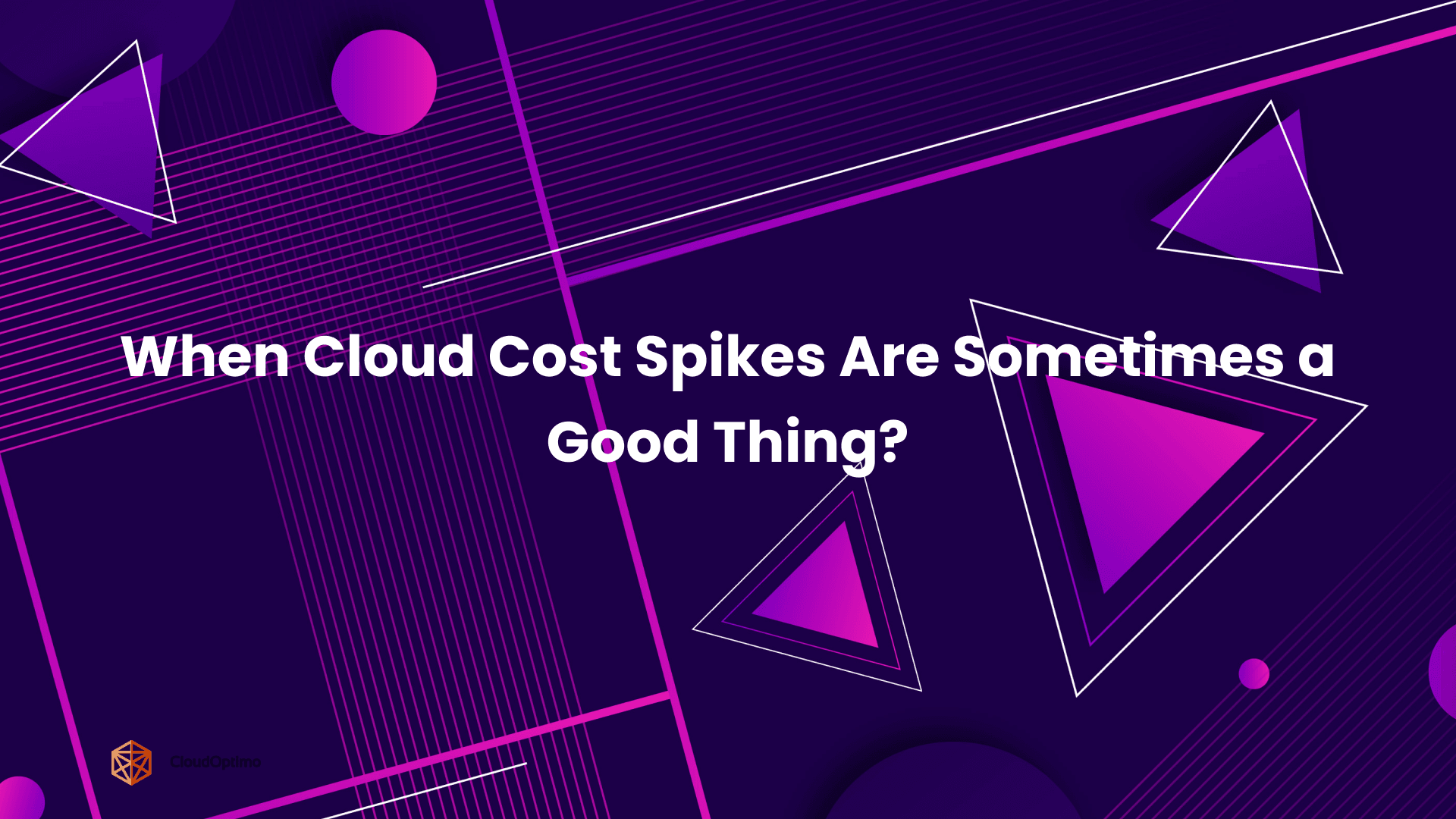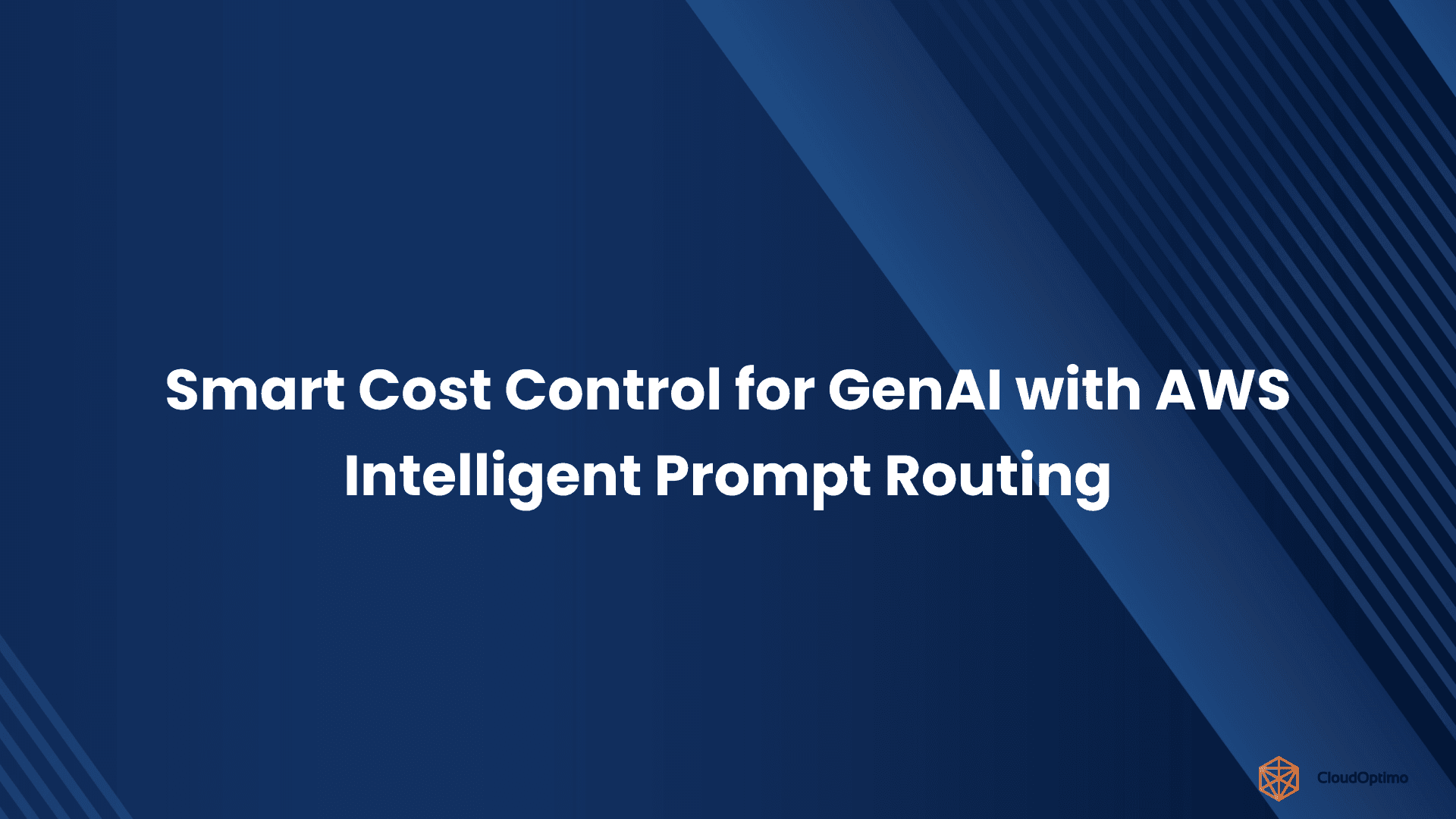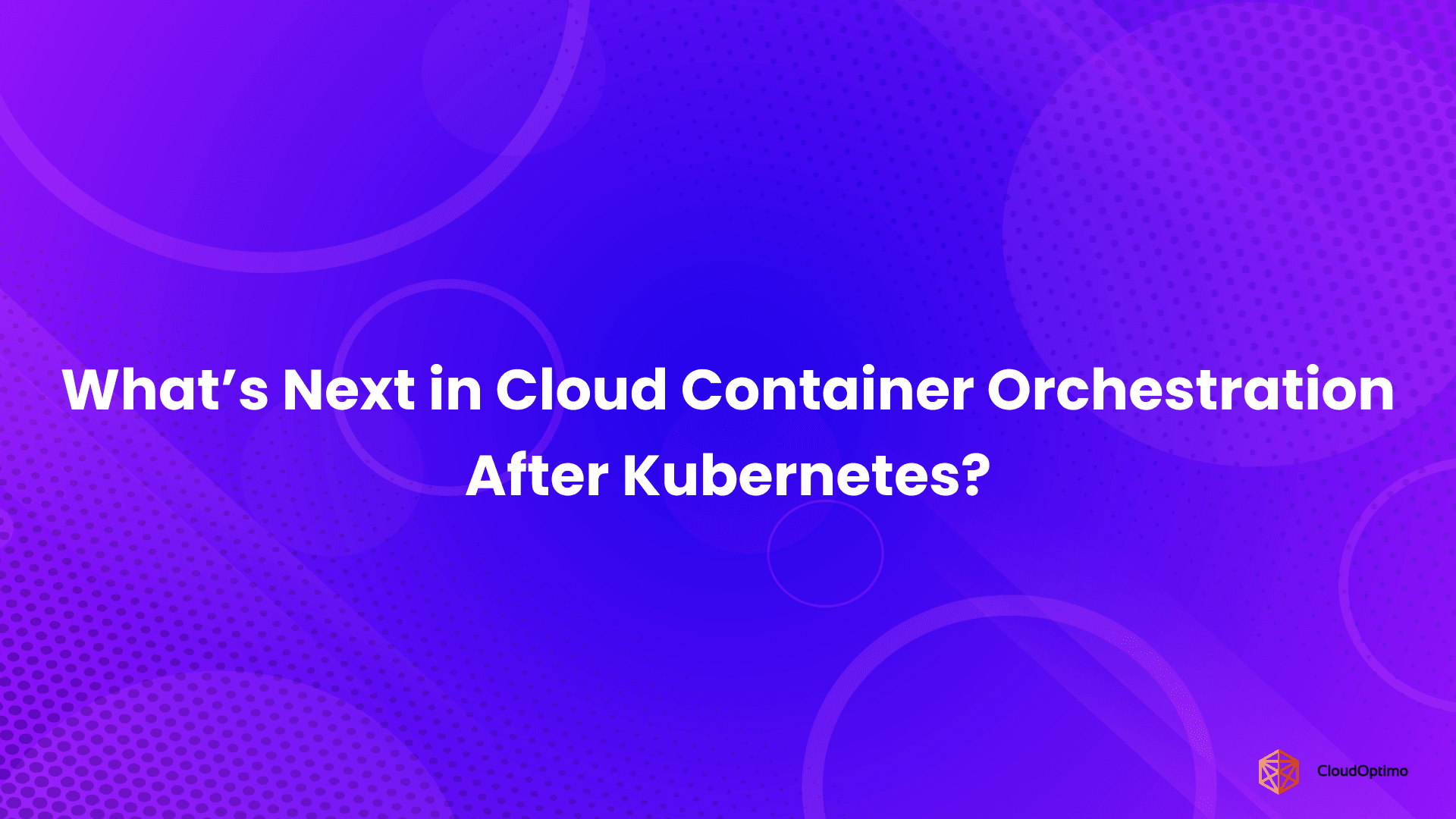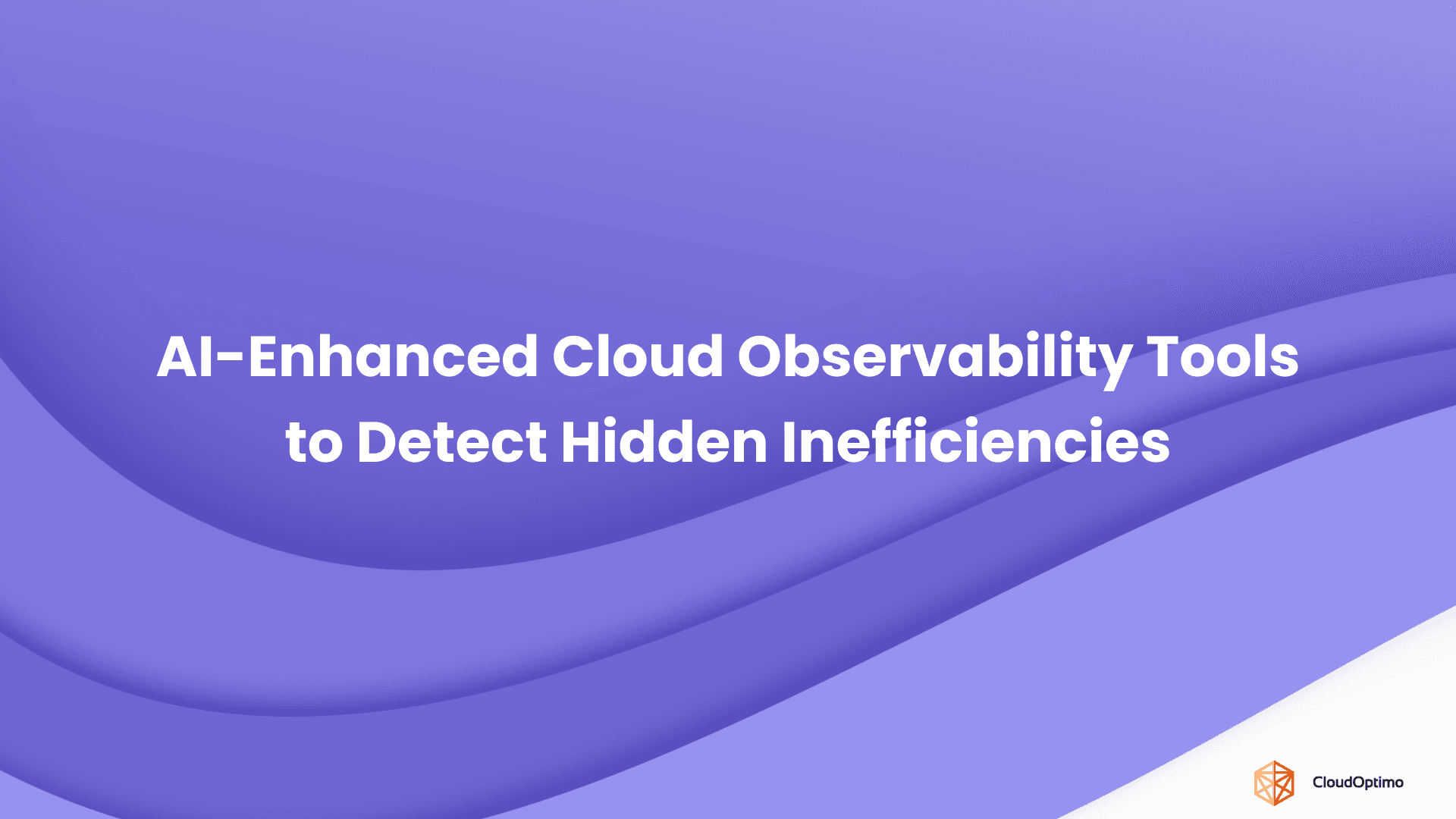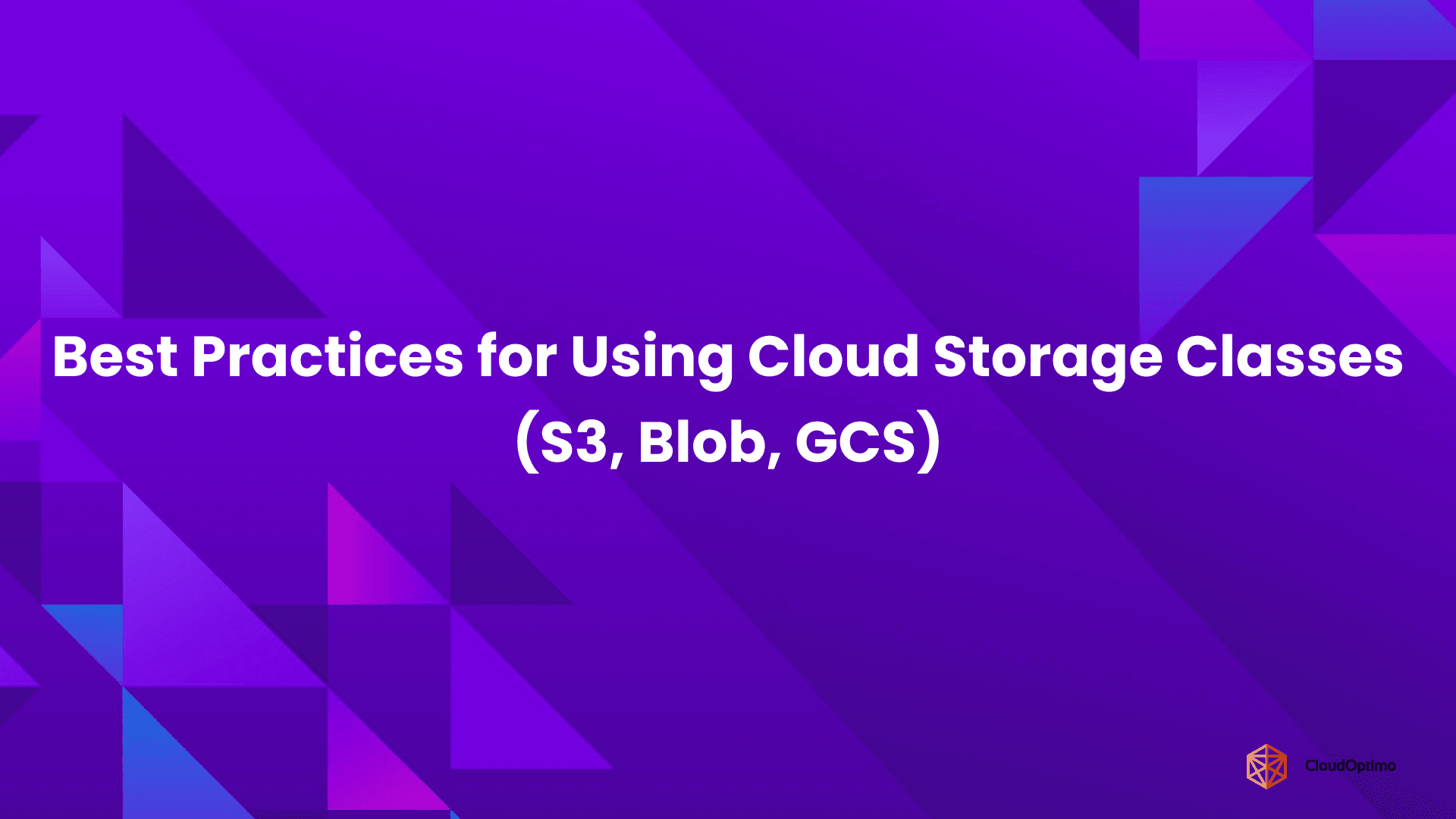Modern digital services demand low latency and high availability worldwide. Whether you run an e-commerce site, a streaming platform, or a global app, fast and reliable content delivery is critical. CloudFront, Cloudflare, and Akamai aim to deliver performance, but their approaches and strengths differ.
This blog highlights what sets each apart, helping you choose the CDN that fits your audience and infrastructure.
What is CDN?
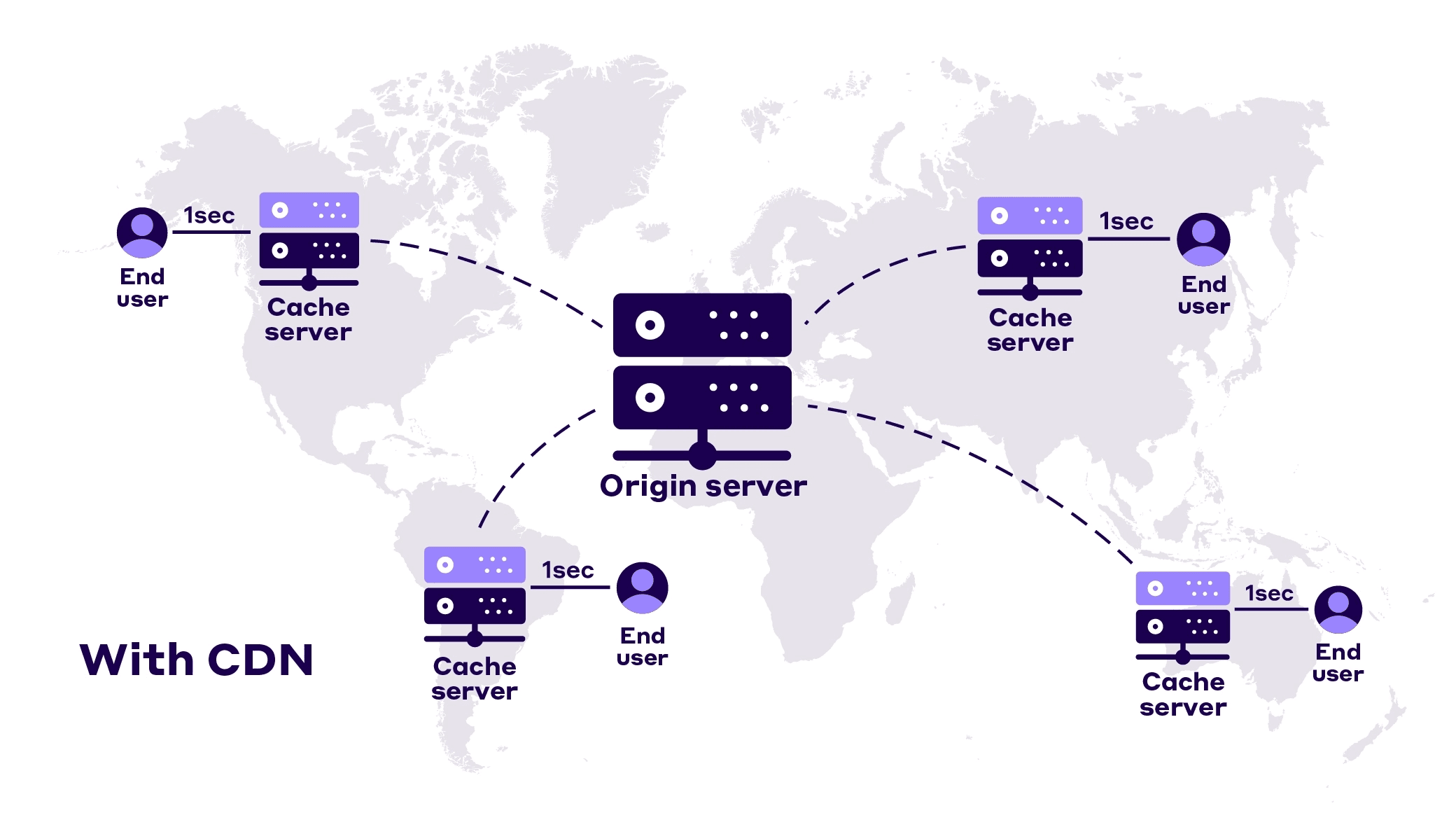
Source - Nitropack
A CDN (Content Delivery Network) is a globally distributed system of servers that caches and delivers content, such as images, JavaScript, CSS, HTML, videos, APIs, or even dynamic data, from the location nearest to the end user. By serving content from a server closer to the user, CDNs improve website speed, reduce latency, and provide a better overall user experience.
Why CDNs Are Essential for Modern Websites and Applications?
User expectations have increased significantly. If your website or app is slow or unreliable, users leave—and rarely return. Here’s why CDNs are now necessary:
- Faster Load Times: Instead of content traveling from a single origin server that might be thousands of miles away, CDNs serve data from local edge nodes, cutting load times significantly.
- Global Reach: With users scattered worldwide, relying on one server means uneven performance. CDNs place your content close to users everywhere, from New York to New Delhi.
- Enhanced Security: Modern CDNs shield your site from DDoS attacks, provide SSL encryption, and offer firewall protections, reducing vulnerabilities.
- Reliability: Built with redundancy, CDNs reroute traffic if a node fails, keeping your site online through traffic spikes or outages.
Traditional Hosting vs Modern CDNs
To understand the significant impact of CDNs (Content Delivery Networks), compare them with traditional hosting:
| Feature | Traditional Hosting | Modern CDNs |
| Content Delivery | Origin server only | Cached at edge nodes close to users |
| Latency | High for global traffic | Low latency with regional delivery |
| Traffic Management | Centralized | Load-balanced globally |
| Scalability | Manual or limited | Auto-scaled across multiple regions |
| Security Features | Basic SSL, firewall | Advanced DDoS, WAF, Zero Trust, Bot Protection |
| Dynamic Content Handling | Origin-reliant | Edge functions, custom routing, streaming |
Modern CDNs are not just faster—they are smarter and more resilient, adapting dynamically to traffic and threats.
Overview of the Platforms
Each CDN platform has its unique features and strengths, catering to different business needs. Let’s start with a brief overview of the three:
CloudFront: Amazon’s Global Content Delivery Solution
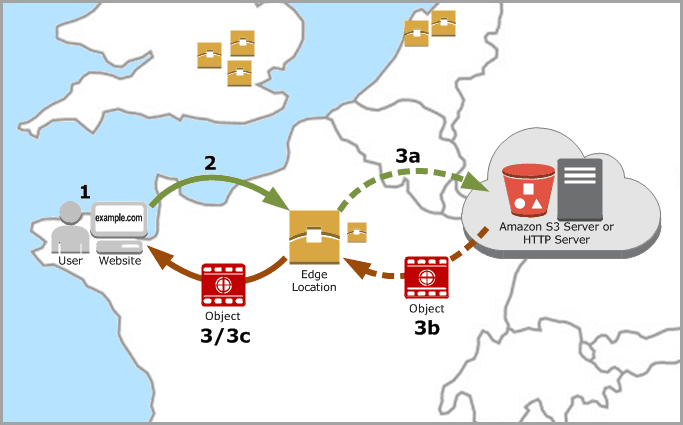
Source - AWS
Amazon CloudFront is a fully managed content delivery network built as part of the AWS ecosystem. Launched to accelerate web and application delivery, it integrates deeply with AWS services such as S3 for storage and EC2 for computing. CloudFront is designed to provide scalable, low-latency content delivery worldwide, particularly catering to enterprises already leveraging AWS infrastructure.
Cloudflare: A Leading CDN with Speed and Security Features
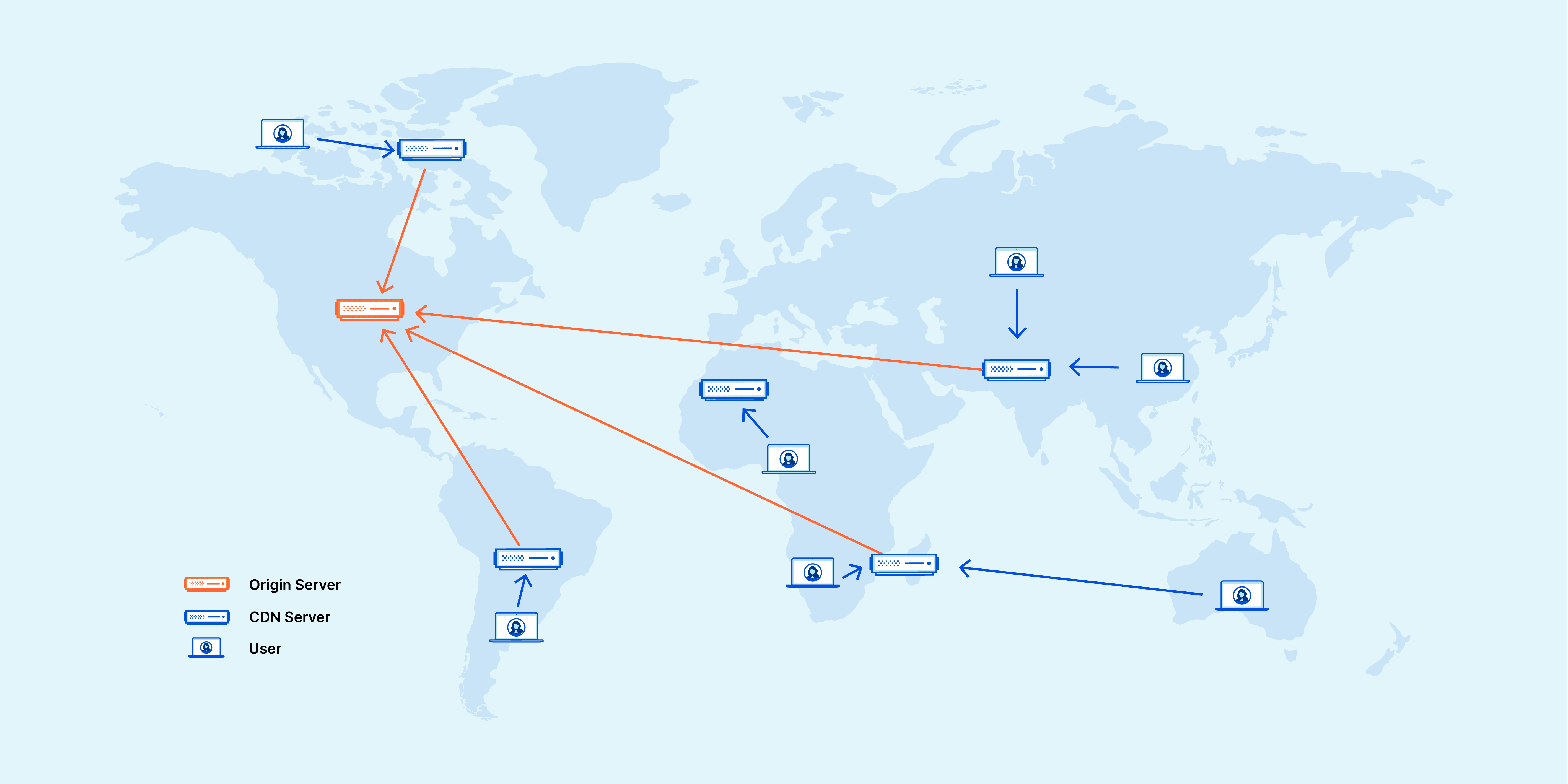
Source - Cloudflare
Cloudflare began as a security-focused CDN platform aiming to simplify content delivery and protect websites from online threats. Over time, it has grown into a global network spanning hundreds of data centers, combining performance optimization with security features. Cloudflare’s platform emphasizes ease of use and accessibility, serving a broad range of customers from startups to mid-sized businesses.
Akamai: The CDN Pioneer Focused on Performance and Reliability
Akamai is one of the earliest and largest CDN providers, established to meet the demands of enterprise-level content delivery. Its network spans over a thousand locations worldwide, offering unmatched scale and reliability. Akamai’s solutions are tailored for high-traffic, mission-critical applications, making it a preferred choice for industries requiring consistent performance and advanced security.
Quick Snapshot: What’s Ahead
| Platform | Origin & Backing | Target Audience | Core Strength |
| CloudFront | Built by AWS, tightly coupled with AWS services | Developers, AWS-first teams | Scalable, infrastructure-native delivery |
| Cloudflare | Independently built, modern web-centric | Developers, startups, SMBs | Speed, security, developer-first UX |
| Akamai | CDN pioneer, enterprise-grade legacy | Large enterprises, global brands | Reach, reliability, enterprise trust |
Let’s take a deeper dive into the key aspects of these platforms to understand where each one stands.
Global Network & Edge Locations: Where Your Content Physically Reaches Users
A CDN’s global presence isn’t just about a high number of data centers—it’s about how those locations are architected, distributed, and connected. The physical and network proximity of edge nodes to your users directly impacts latency, cache effectiveness, and content delivery consistency.
This section breaks down CloudFront, Cloudflare, and Akamai's distinct network designs to reveal how each provider’s infrastructure shapes performance across diverse geographies.
CloudFront: Region-Centric with Backbone Optimization
CloudFront’s architecture is built around AWS’s core regions, supported by over 400 edge locations and 13+ Regional Edge Caches. Rather than a fully flat global network, CloudFront follows a tiered caching model that prioritizes origin performance and internal AWS service locality.
- Tiered Edge Strategy: Local PoPs handle incoming requests, but many cache misses are routed through regional caches before going back to the origin. This reduces origin load but introduces extra hops in global delivery.
- Region-Centric Optimization: Its design favors applications hosted within AWS. If your content origin is already in S3 or EC2, CloudFront reduces latency and bandwidth costs significantly, with inter-AWS edge-origin traffic often staying below 10 ms RTT.
- Coverage by Reach, Not Density: Compared to others, CloudFront is less dense in edge locations per country, but focuses on high-bandwidth Tier 1 markets and benefits from the reliability of AWS’s backbone routing.
For AWS-native applications or workloads where origin proximity matters more than absolute edge density, CloudFront offers consistent performance through regional consolidation.
Cloudflare: Full-Stack Compute at Every Edge
Cloudflare’s network is fully flat and Anycast-based, with 300+ edge locations in over 100 countries. Unlike CloudFront, there are no mid-tier caches — every edge runs the full cache stack and responds independently to user requests.
- Single-Hop Routing: Requests are always routed to the closest available edge — minimizing latency without introducing hierarchical lookups.
- Edge Density for Local Proximity: Cloudflare aggressively expands into Tier 2 and Tier 3 cities, increasing the likelihood that a user is within <20 ms RTT of an edge node — even in less-served regions like Southeast Asia or South America.
- Network-Level Optimizations: Its deep peering with 11,000+ networks (including local ISPs and carriers) ensures fast ingress and egress paths that reduce last-mile bottlenecks.
Cloudflare is architected for latency uniformity at the last mile, which benefits globally distributed applications with users in both core and edge markets.
Akamai: Telco-Embedded, Deep Edge at Carrier-Level Scale
Akamai operates the largest and most deeply embedded CDN footprint globally, with 4,100+ edge nodes across 130+ countries, often placed inside ISPs, cable networks, and mobile carriers. This architectural model makes Akamai’s edge fundamentally closer to end users than any other CDN.
- Carrier-Level Colocation: By embedding directly within ISP networks, Akamai can serve content within the same last-mile infrastructure as the user, often reducing hops to one or two network segments.
- Unmatched Depth in Emerging Markets: Akamai has a long-standing presence in regions where other CDNs rely on external transit — for example, it operates caches inside major African mobile carriers, where few others have physical presence.
- Hierarchical Distribution, Locally Focused: While it does use a multi-tiered distribution model, Akamai’s strength lies in the density and proximity of the first edge hop, not just its overall scale.
For applications where milliseconds matter — like streaming video, gaming, or in-market content delivery — Akamai’s last-mile architecture gives it a physical and performance edge no other provider replicates.
| Capability / Characteristic | CloudFront (AWS) | Cloudflare | Akamai |
| Edge Node Count | 400+ Edge Locations + 13 Regional Caches | 300+ Edge Locations in 100+ countries | 4,100+ Edge Nodes in 130+ countries |
| Edge Architecture Model | Tiered (Edge → Regional Cache → Origin) | Flat (All edges fully functional, no hierarchy) | Tiered but colocated within ISPs for minimal user hops |
| PoP Placement Strategy | Region-focused, optimized around AWS infrastructure | Hyperlocal — prioritizes ISP proximity in urban zones | Deep embedding inside ISPs, carriers, and mobile networks |
| Latency to End User (avg.) | ~50–100 ms globally (varies with AWS region proximity) | <20–50 ms median across major metros | Often <15–30 ms due to last-mile presence |
| Emerging Market Coverage | Moderate | Strong | Deep, including Tier 3 carriers and underserved regions |
| Network Peering / Transit | AWS backbone + public peering | 11,000+ peering relationships worldwide | Private and direct integration with ISPs and backbone carriers |
Content Support Capabilities: Handling More Than Just Static Assets
Modern applications require CDNs to do more than just cache static files. Streaming high-quality video, optimizing images in real-time, and delivering personalized dynamic content are critical demands. How each provider supports these workloads reveals their core strengths in media processing and content acceleration.
This section explores the unique content support capabilities of CloudFront, Cloudflare, and Akamai.
CloudFront: Deep Media Ecosystem Integration and Dynamic Content at Scale
CloudFront excels when tightly coupled with AWS’s expansive media services. It supports workflows that demand high scalability and customizability, particularly for video streaming combined with dynamic web applications.
CloudFront’s strength lies in its native integration with AWS Elemental Media Services, which provides an end-to-end solution for live and on-demand video streaming:
- Streaming Protocols & Scale: Supports major protocols like HLS and DASH at scale, capable of delivering millions of concurrent streams with adaptive bitrate capabilities that reduce buffering by up to 40% in fluctuating network conditions.
- Dynamic Content Handling: Lambda@Edge lets developers inject custom logic at the edge, enabling dynamic content generation, A/B testing, and real-time personalization with response times under 10 ms at the edge node—minimizing origin load and accelerating user experiences.
- Cache Efficiency: With the layered cache model, CloudFront reduces origin fetches by up to 60%, which is crucial for high-traffic streaming events and dynamic APIs.
However, this deep integration also means the best performance gains come when the origin content and backend services are within the AWS ecosystem, utilizing their internal backbone for low latency.
Cloudflare: Real-Time Media Optimization and Simplified Streaming Deployment
Cloudflare’s edge-first philosophy extends beyond caching into intelligent media processing and developer-friendly streaming services designed for rapid deployment and global scale.
Its approach to content support focuses on enhancing media quality and load times without burdening developers with complex setup:
- Image Optimization at Scale: Cloudflare’s Polish and Mirage technologies optimize billions of images daily by automatically resizing, compressing, and converting formats like WebP—often reducing image payload size by 35-50% without noticeable quality loss, dramatically improving page load times.
- Integrated Streaming via Cloudflare Stream: Provides an all-in-one video platform with encoding, global delivery, and player management, abstracting the complexity of traditional video pipelines. Cloudflare Stream handles adaptive bitrate streaming seamlessly and supports up to 10 million minutes of video playback daily with predictable pricing.
- Edge Compute for Dynamic Content: Through Cloudflare Workers, custom logic and transformations can be applied at the edge, reducing round trips to the origin and enabling dynamic personalization or API responses with cold start latencies typically under 5 ms.
This combination makes Cloudflare highly suited for content-heavy sites looking to accelerate rich media delivery with minimal infrastructure investment.
Akamai: Media Delivery Expertise for High-Volume and Interactive Experiences
Akamai’s decades of experience displays in its robust, high-performance media delivery platform, built for enterprises with massive audiences and stringent quality-of-service demands.
Key features emphasize minimizing buffering and maximizing throughput, even at peak load:
- Adaptive Media Delivery: Akamai’s proprietary streaming enhancements improve adaptive bitrate switching accuracy, reducing video stalls by up to 25% compared to baseline HLS/DASH implementations. This capability supports over 75 million simultaneous streams during large-scale global events.
- Ion Front-End Optimization: Beyond streaming, Ion accelerates web and mobile content by optimizing images, minimizing JavaScript/CSS payloads, and improving TCP performance—yielding up to 50% faster page load times and better Core Web Vitals scores.
- Edge-Driven Media Logic: Akamai’s edge platform supports sophisticated caching and dynamic rule sets to tailor content delivery based on device type, location, or network conditions, helping enterprises maintain consistent experiences for millions of concurrent users.
While requiring more upfront configuration and custom tuning, Akamai’s platform is unmatched for high-demand streaming, gaming, and interactive applications where performance and reliability are non-negotiable.
| Feature / Metric | CloudFront (AWS) | Cloudflare | Akamai |
| Concurrent Streaming Scale | Millions of streams with AWS Media Services | Supports 10 M+ daily minutes via Cloudflare Stream | 75 M+ simultaneous streams during major events |
| Adaptive Bitrate Efficiency | Up to 40% reduced buffering via AWS adaptive streaming | Integrated adaptive streaming in Cloudflare Stream | 25% fewer video stalls with proprietary adaptive algorithms |
| Image Payload Reduction | N/A (relies on AWS services or origin prep) | 35–50% average reduction via Polish & Mirage | Up to 50% faster load with Ion optimization |
| Edge Dynamic Content Latency | ~10 ms via Lambda@Edge | <5 ms cold start with Workers | Variable: highly configurable, optimized for scale |
| Integration Complexity | Deep AWS ecosystem integration required | Plug-and-play with minimal setup | Enterprise-grade setup with extensive tuning |
Configuration & Customization: How Much Control Can You Exercise at the Edge?
Performance is no longer just about proximity—it’s about programmability. Modern web applications often need to modify content, handle personalization, enforce logic, or run security checks directly at the edge before requests even reach the origin. This section compares how CloudFront, Cloudflare, and Akamai enable you to program, customize, and operationalize behavior at the edge, and what trade-offs exist in terms of flexibility, latency, and developer experience.
CloudFront: AWS-Native Customization with Lambda@Edge and CloudFront Functions
CloudFront provides two serverless compute layers—CloudFront Functions and Lambda@Edge—giving developers control over how content is served, redirected, or personalized before it hits the origin.
CloudFront Functions (Lightweight, High-Speed Logic)
- Designed for low-latency, lightweight operations such as redirects, URL rewrites, and header manipulations.
- Executes in under 1 ms at over 450 edge locations, with zero cold starts.
- Supports only viewer request and viewer response events, limiting logic to early-stage request handling.
Lambda@Edge (Full-Featured, Heavyweight Control)
- Allows execution of full Node.js functions, capable of calling APIs, accessing databases, or customizing content deeply.
- Runs at the CloudFront edge layer (100+ locations), adds ~10–30 ms latency depending on the operation.
- Supports four trigger points: viewer/origin request and response, making it suitable for complex personalization, authorization, or dynamic routing.
While powerful, both tools are tightly integrated with AWS IAM, logging, and deployment pipelines—ideal for teams already working within the AWS DevOps ecosystem.
Cloudflare: Unified Developer Control with Workers and Durable Objects
Cloudflare Workers offer one of the most flexible, performant, and developer-centric edge computing platforms, with minimal cold starts and deep JavaScript/V8 integration.
Workers Runtime (High-Speed and General Purpose)
- Built on V8 isolates, Workers offer near-instant cold starts (typically <5 ms) and 99.99% of requests complete in <50 ms globally.
- Unlike Lambda@Edge, Workers allow deep logic, KV store access, and third-party API calls without vendor lock-in.
- Supports rich routing logic, cookie manipulation, bot detection, AB testing—all at the edge with full isolation per request.
Durable Objects & R2 (Stateful Edge Patterns)
- Durable Objects allow consistent, low-latency coordination of shared state (e.g. chat sessions, counters, game rooms) closer to the user.
- Paired with R2 object storage, Workers support edge-based file serving and content transformation without origin dependency.
Cloudflare's model favors speed, simplicity, and cross-platform deployment—ideal for building edge-native apps without a heavy DevOps investment.
Akamai: Enterprise-Grade Configuration via Property Manager and ESI (Edge Side Includes)
Akamai’s configuration model leans toward enterprise-grade templating and granular policy control, with less emphasis on general-purpose code execution.
Property Manager (Declarative Rule Engine)
- Visual or API-driven configuration of edge behaviors using over 300+ conditional rules and match criteria.
- Supports granular control across headers, cookies, query params, device types, geolocation, and more.
- Config changes are versioned and staged before going live, aligning with rigorous change control policies used in regulated industries.
Edge Side Includes (ESI)
- Akamai pioneered ESI, a markup language allowing dynamic HTML assembly at the edge—e.g., inserting user-specific banners or offers without regenerating full pages.
- Especially effective in eCommerce and publishing, where portions of content (e.g., pricing, personalization) change frequently.
While it lacks the open-ended coding flexibility of Workers or Lambda, Akamai’s configuration depth, stability, and versioning are unmatched for enterprises that need governed, rule-driven control over massive global traffic.
| Feature / Capability | CloudFront | Cloudflare | Akamai |
| Edge Runtime Type | CloudFront Functions (light) + Lambda@Edge (full) | Workers (V8 isolates) | No general compute; rule engine + ESI |
| Cold Start Latency | ~0 ms (Functions), ~10–30 ms (Lambda@Edge) | <5 ms for most requests | N/A (rule-based, no code execution) |
| Execution Scope | Viewer + origin request/response (Lambda), viewer only (Functions) | Full request lifecycle | Declarative: request/response headers, cookies, etc. |
| Programming Model | Node.js, IAM-secured AWS deployments | JavaScript/TypeScript in V8, API-first | Declarative rule definitions, ESI XML-style templating |
| Customization Use Cases | Personalization, access control, AB testing | Dynamic routing, edge personalization, edge apps | ESI-based content assembly, compliance-focused tuning |
Pricing & Cost Transparency: Understanding the True Cost of CDN Services
Pricing models vary wildly across providers, not just in numbers but in structure: one may charge per GB, another wraps it into predictable plans, while a third negotiates everything through contracts.
In this section, we break down how CloudFront, Cloudflare, and Akamai price their services—not just headline rates, but how they scale with usage, account for regions, and impact budgeting decisions over time.
CloudFront: AWS Pay-as-you-Go with Regional Variation
Amazon CloudFront offers a pay-as-you-go model, with pricing that varies based on region, data transfer volume, and request types.
- Data Transfer Rates:
- North America & Europe: Starts at $0.085 per GB for the first 10 TB/month.
- South America: Rates can be higher, up to $0.170 per GB.
- Volume Discounts: Prices decrease with higher usage, dropping to $0.03 per GB for large volumes.
- Request Charges:
- HTTP/HTTPS Requests: Ranges from $0.007 to $0.010 per 10,000 requests, depending on the region.
- Additional Costs:
- Features like Lambda@Edge and real-time logs incur extra charges.
For detailed pricing, refer to the AWS CloudFront Pricing page.
Cloudflare: Tiered Pricing with Predictable Costs
Cloudflare provides a range of plans, from free to enterprise-level, with transparent and predictable pricing.
- Core Plans:
- Free Plan: Includes basic CDN services with unlimited bandwidth.
- Pro Plan: $20/month, offering enhanced features.
- Business Plan: $200/month, suitable for small to medium businesses.
- Enterprise Plan: Custom pricing based on specific needs.
- Data Transfer Costs:
- Standard CDN: Unlimited bandwidth is included in all plans.
- Cloudflare Stream (Video Hosting): Starts at $5 per 1,000 minutes of video stored.
- Additional Services:
- Features like Argo Smart Routing and Workers have separate pricing.
Explore detailed pricing on the Cloudflare Pricing page.
Akamai: Enterprise Pricing with Customized Solutions
Akamai's pricing is tailored to enterprise needs, with customized solutions based on traffic volume, regions, and specific service requirements.
- Data Transfer Rates:
- Base rates start at $0.035–$0.049 per GB, varying by volume and geography.
- For high-volume customers, rates can be negotiated lower.
- Contractual Agreements:
- Typically involves 12-month minimum contracts, with pricing based on committed usage levels.
- Additional Services:
- Advanced features like WAF, DDoS protection, and Edge DNS are available at additional costs.
For a customized quote, visit the Akamai Pricing page.
| Feature | CloudFront (AWS) | Cloudflare | Akamai |
| Base Data Transfer Rate | $0.085/GB (NA/EU), up to $0.170/GB (SA) | Included in plan | $0.035–$0.049/GB |
| Volume Discounts | Yes, down to $0.03/GB | Not applicable | Yes, based on committed usage |
| Request Charges | $0.007–$0.010 per 10,000 requests | Included in plan | Included in contract |
| Minimum Contract | None | None | 12 months |
| Additional Features | Extra charges for advanced features | Some features priced separately | Advanced features at additional costs |
Note: Pricing is subject to change and may vary based on specific usage patterns and negotiated agreements.
Deployment, Monitoring & Scaling: Operational Efficiency at Edge Speed
Delivering content quickly is only part of the equation. How smoothly a CDN fits into your deployment pipeline, how well it surfaces performance data, and how automatically it scales to meet traffic spikes—these are critical for modern engineering teams under pressure.
This section analyzes how CloudFront, Cloudflare, and Akamai compare in terms of operational agility in real-world scenarios.
CloudFront: DevOps-Centric with AWS-Integrated Visibility
CloudFront benefits from its deep AWS integration, enabling infrastructure teams to treat CDN as code, with granular control over deployments and observability.
Deployment Strategy
- Supports full IaC workflows through AWS CloudFormation, CDK, Terraform, and 3rd-party CI/CD systems.
- Edge logic using Lambda@Edge or CloudFront Functions can be versioned, tested, and deployed in CI pipelines.
- Configuration changes propagate globally in about 90 to 120 seconds with rollback support via deployment stages or manual promotion.
Monitoring Infrastructure
- Uses AWS CloudWatch for request-level metrics: cache hit/miss ratios, origin response time, 4xx/5xx errors, and TTL behavior.
- Integration with AWS X-Ray offers request tracing through the entire service path, including application layers behind CloudFront.
- Metric filtering and alarms can be programmatically set for high-latency regions or elevated error spikes.
Scaling Mechanics
- Auto-scales with global demand—no pre-provisioning or capacity planning required.
- Supported by over 450 edge locations globally.
- Lambda@Edge and CloudFront Functions scale horizontally with no concurrency limits under typical usage.
Cloudflare: Lightweight Deployments with Edge-Native Observability
Cloudflare emphasizes speed of control and real-time feedback. It delivers an edge-native platform where changes and insights flow as fast as the requests themselves.
Deployment Strategy
- CDN rule changes and Cloudflare Worker updates are applied globally in under 30 seconds—no regional propagation lag.
- Offers a developer-first CLI (Wrangler) with full GitHub Actions and CI support for deploying edge logic.
- Advanced traffic steering and routing policies can be managed through the API or web dashboard with minimal delay.
Monitoring Infrastructure
- Unified analytics dashboard provides request counts, cache status, response codes, and bot filtering—updated in near real-time.
- DataStream allows raw logs to be pushed to external storage (Amazon S3, Google BigQuery, etc.) at near real-time intervals.
- Real User Monitoring (RUM) integrations offer performance data from actual visitors, including Time to First Byte and Page Load Time.
Scaling Mechanics
- Scales to handle millions of concurrent requests per second, no provisioning or regional traffic shaping needed.
- Cloudflare Workers are globally distributed with zero cold-start and virtually unlimited parallel execution.
- Automatic load balancing, DDoS mitigation, and failover are included at no additional configuration.
Akamai: Controlled Rollouts with Enterprise-Grade Governance
Akamai’s platform is built for organizations with strict compliance, heavy global traffic, and operational processes that demand stability over speed.
Deployment Strategy
- Property Manager enables versioned configuration updates with multi-step staging and validation.
- Rollouts across Akamai’s 4,200+ edge servers typically complete within 10 to 15 minutes, designed for enterprise change control workflows.
- It supports preview links, differential testing, and approval gates, which are valuable in regulated or high-risk industries.
Monitoring Infrastructure
- DataStream 2 provides high-resolution logs at the edge with support for third-party SIEMs (Splunk, Datadog, etc)
- mPulse provides real user monitoring with browser-level telemetry, including DNS lookup time, first contentful paint, and network latency.
- Granular dashboards allow for deep diagnosis by segmenting performance data by geography, device type, and content type.
Scaling Mechanics
- Built to support over 300 Tbps of peak delivery traffic, backed by Tier 1 carrier partnerships and distributed DNS infrastructure.
- Features like overload protection, adaptive bitrate throttling, and resource prioritization help maintain availability during critical spikes.
- SLAs and 24/7 network operation support are available for enterprise deployments.
| Feature | CloudFront | Cloudflare | Akamai |
| Deployment Speed | ~2 minutes globally | <30 seconds global propagation | ~10-15 minutes with version staging |
| Edge Logic Deployment | Lambda@Edge, CloudFront Functions | Cloudflare Workers, Traffic Policies | Property Manager, EdgeWorkers |
| CI/CD Integration | CloudFormation, CDK, Terraform | Wrangler CLI, GitHub Actions | Web-based + API-driven staging control |
| Monitoring Tools | CloudWatch, AWS X-Ray | Analytics Dashboard, DataStream, RUM | DataStream 2, mPulse |
| Raw Log Export | Yes (via CloudWatch Logs, S3) | Yes (to S3, BigQuery, custom sinks) | Yes (to SIEMs and analytics platforms) |
| RUM Support | Limited (via 3rd-party) | Built-in, with page-level telemetry | Built-in (mPulse), enterprise-grade detail |
| Scaling Mechanism | Auto-scaling, serverless at edge | Auto-scaling Workers, no limits | Global scaling with traffic shaping options |
| Peak Traffic Handling | 100+ Tbps (shared AWS infra) | Millions of concurrent req/sec, >100 Tbps+ | 300+ Tbps, 4,200+ edge locations |
| Governance & Rollback | Basic rollback via IaC | Immediate rollback via redeploy | Version control with approval gates |
Security, Privacy & Compliance: Evaluating Edge Defense Architectures
Modern CDNs must do more than deliver content—they operate as distributed security platforms tasked with mitigating live threats, enforcing regional compliance, and controlling data exposure at scale. What differentiates providers today is not the presence of features like WAF or DDoS protection, but how these are architected, automated, and integrated across the edge.
CloudFront: Security Inheritance from AWS Backbone
CloudFront leverages the AWS security ecosystem to enforce infrastructure-grade protection and configurable policy control across global delivery layers.
DDoS Mitigation & Threat Detection
- Backed by AWS Shield Standard (included by default), protecting against most volumetric DDoS attacks.
- AWS Shield Advanced adds managed DDoS response with 24/7 monitoring and cost protection for mitigation-related spikes.
Application-Level Security
- AWS Web Application Firewall (WAF) tightly integrates with CloudFront for OWASP rule sets, IP reputation lists, and custom request filtering.
- WAF supports over 10,000 rules per web ACL with logical rule chaining, regex pattern matching, and header-based filtering.
Data Privacy & Compliance
- Offers geo-restriction, field-level encryption, and signed URLs/cookies to control content delivery boundaries.
- Fully aligned with HIPAA, FedRAMP, GDPR, and SOC 1/2/3.
- Logging via CloudTrail and CloudWatch ensures auditability down to the individual request level.
Notable Limitation
- Advanced features like bot protection, credential stuffing defense, and rate-limiting require separate AWS service integration (WAF, Shield, GuardDuty).
Cloudflare: Full-Stack Edge Security with Zero Trust Model
Cloudflare positions itself as a security-first platform, embedding attack mitigation and access control directly into its edge layer—no extra services required.
DDoS Protection
- Mitigates Layer 3–7 DDoS attacks across a 120 Tbps network, with automatic detection and filtering at the nearest PoP—no manual configuration.
- Claims a <3-second time-to-mitigate window for most L7 attacks, validated during record-scale attacks (e.g., 71M rps in 2023).
WAF & API Shielding
- Built-in WAF supports OWASP rules, API schema validation, GraphQL security, and automatic detection of abuse patterns.
- Offers ML-driven anomaly detection, real-time bot protection, and active fingerprinting to block credential stuffing and scraping attempts.
Zero Trust & Identity Access
- Cloudflare Access enables identity-based app gating without VPNs—integrates with Okta, Azure AD, and others.
- TLS v1.3, client certificates, and mutual TLS are supported across all edge connections.
Privacy & Compliance
- No on-premises data logging by default—compliant with GDPR, SOC 2, ISO 27001, and PCI DSS.
- Advanced compliance controls are available via Cloudflare One and Data Localization Suite (for region-specific routing/logging).
Akamai: Enterprise-Scale Security Engineered for Granular Control
Akamai’s security stack is built for governments, banks, and multinational enterprises with heavy compliance mandates and targeted threat risks.
DDoS Mitigation Prolexic Routed scrubs traffic through Akamai’s globally distributed scrubbing centers, protecting against attacks exceeding 900+ Gbps per site.
- Available always-on or on-demand, with an SLA-backed mitigation guarantee.
Web Application & API Protection Akamai’s App & API Protector uses behavior-based rules to block zero-day attacks and includes API discovery tools for shadow API risk mitigation.
- Incorporates advanced bot manager, micro-segmentation, and intelligent caching to offload CPU-heavy inspection workloads from the origin.
Zero Trust & Network Segmentation
- Akamai’s Enterprise Application Access (EAA) provides agentless access with policy-based controls and integrated identity federation.
- Integrates with SIEM, SOAR, and existing IAM platforms.
Compliance & Governance
- Offers custom compliance modules aligned with FIPS 140-2, SOC 2 Type II, HIPAA, and GDPR.
- Real-time attack telemetry and 365-day log retention are configurable for audit trails and incident response.
| Feature | CloudFront | Cloudflare | Akamai |
| DDoS Mitigation | AWS Shield Standard (free); Advanced optional | Built-in L3–L7 DDoS protection, auto-mitigated | Prolexic Routed (always-on/on-demand), SLA-backed |
| WAF Capabilities | AWS WAF (rule sets, regex, IP sets) | Native WAF with ML-based abuse detection | App & API Protector with behavior-based detection |
| API Security | Via AWS WAF and API Gateway | Native GraphQL and schema validation | API discovery, risk-based rules |
| Bot Management | Via AWS WAF Bot Control | Real-time fingerprinting, automated blocklists | Bot Manager with ML and segmentation |
| Zero Trust Access | Via AWS IAM & VPN | Cloudflare Access (VPN-less, identity-aware) | EAA (agentless, policy-driven access control) |
| Data Privacy Compliance | GDPR, HIPAA, FedRAMP, SOC 2/3 | GDPR, SOC 2, PCI DSS, ISO 27001 | HIPAA, SOC 2 Type II, FIPS 140-2 |
| TLS/Encryption Support | TLS v1.2+, field-level encryption, signed URLs | TLS v1.3, mutual TLS, automatic cert rotation | TLS v1.3, advanced client certificate handling |
| Security Event Logging | CloudWatch, CloudTrail | Real-time logs, DataStream, SIEM integration | Real-time telemetry, 365-day log retention |
| Geo-Control & Data Residency | Geo-restrictions, signed cookies | Data Localization Suite for region-specific handling | Region-specific routing, compliance zone configurations |
Integration: Fitting CDN into Your Existing Systems
In CDN selection, performance and price often take the spotlight—but long-term operational success hinges on integration. A CDN that doesn’t mesh seamlessly with your existing CI/CD pipelines, observability stack, or DevSecOps practices becomes a liability, not a performance layer. Whether you're deeply invested in AWS, running a polycloud stack, or managing complex enterprise systems, integration flexibility is what enables scale without friction.
CloudFront: Deep AWS Alignment with Tight Service Coupling
CloudFront is purpose-built for AWS-native environments. Rather than offering standalone tooling, it functions best as part of a cloud-native service mesh, orchestrated through existing AWS management layers.
Tightest Fit for AWS-Centric Workloads
- Direct integration with S3, API Gateway, Lambda, ALB, and Route 53—no connectors or middleware required.
- Edge logic through Lambda@Edge and CloudFront Functions uses the same IAM and deployment pipelines as the rest of your AWS stack.
Infrastructure as Code (IaC) Ready
- Full support for CloudFormation, Terraform, and CDK allows declarative provisioning of CDN distributions alongside application logic.
- IAM-based access control ensures single-policy governance across your application and delivery layer.
Logging & Observability
- Sends logs directly to CloudWatch Logs and Kinesis, enabling integrated alerting, visualization, and long-term retention.
- CloudTrail captures administrative actions across deployments, satisfying audit and compliance requirements.
Trade-Off
- Non-AWS users face steep onboarding friction. Any meaningful use of CloudFront beyond basic static delivery often requires configuring 3–4 other AWS services.
Cloudflare: Platform-Agnostic and API-Centric by Design
Cloudflare was built to serve teams regardless of where their infrastructure lives. Its integration model emphasizes API-first delivery, developer autonomy, and language-agnostic SDKs—ideal for hybrid, multicloud, or containerized environments.
Universal Connectivity
- Works seamlessly with workloads on AWS, Azure, GCP, Kubernetes clusters, or bare metal—no lock-in or dependency chain.
- Onboard domains and configure zones without needing edge-specific networking—DNS, security, and CDN are unified.
DevOps & CI/CD Friendly
- Offers a robust REST API and GraphQL interface, supported by SDKs in Go, Python, Node.js, Rust, and more.
- Configuration deployment via Wrangler CLI, GitHub Actions, or Terraform for declarative edge infrastructure.
Modern Stack Compatibility
- Native support for Serverless (Workers) and KV store allows co-locating logic and data at the edge.
- Hooks into popular CI/CD tools like GitLab, CircleCI, and Jenkins, enabling auto-deploy pipelines for CDN changes.
Monitoring & Telemetry
- JSON-based logging integrates with Datadog, Sumo Logic, Elastic Stack, or any system supporting HTTP ingestion or syslog.
- Built-in analytics APIs expose request data down to status codes, cache hit ratios, and edge latency.
Akamai: Enterprise Systems Integration with Policy-Centric Control
Akamai is engineered for integration into regulated, high-scale enterprise environments, often with legacy systems, multiple regional deployments, and strict change control requirements.
Centralized Control via Control Center
- Akamai Control Center serves as the unified GUI for configuration, alerting, and staging—all tied to Akamai’s global platform.
- Integrates with existing enterprise IAM via LDAP, Okta, or custom SSO, offering role-based governance for operational safety.
Property Manager API & Akamai CLI
- Automates delivery config with Akamai’s Property Manager API, which supports dynamic versioning, rollback, and granular rulesets.
- Akamai CLI allows shell-based automation and integration into build pipelines, with plugins for EdgeWorkers, cache invalidation, and diagnostics.
SIEM, ITSM, and Compliance Tools
- Compatible with Splunk, ServiceNow, and Dynatrace out-of-the-box.
- Change management can be staged and propagated via custom deployment workflows, including rollback gates and UAT hooks.
Legacy Compatibility
- Offers integration modules for SAP, Oracle, and on-prem CMS systems, a rare but critical feature for industries like healthcare, finance, and media.
Constraint
- REST API coverage, while improving, still trails behind Cloudflare in real-time deployment responsiveness and dev-centric usability.
Pros and Cons
If you’ve made it this far, you’re not just comparing features — you’re making foundational decisions about how your content moves, scales, and performs globally. Here’s a clear perspective on what each provider gets right, where they fall short, and how those trade-offs surface in real-world usage.
CloudFront
Pros
- Built for AWS-native environments: Deep hooks into S3, EC2, Lambda@Edge, IAM, and more make CloudFront ideal for teams already operating inside AWS.
- Regional edge control: Policy-level tuning and cache behaviors can be scoped to edge locations for fine-grained performance management.
- Flexible compute at the edge: Lambda@Edge and CloudFront Functions bring programmable logic without provisioning infrastructure.
Cons
- Challenging entry point for non-AWS users: From configuration to monitoring, CloudFront expects familiarity with AWS tooling.
- Variable pricing: Costs differ by region and transfer type — difficult to forecast without AWS pricing calculators.
- Limited outside the AWS bubble: Integrations and observability aren’t as intuitive without being all-in on the AWS stack.
Cloudflare
Pros
- Instant global reach: Anycast architecture, simple DNS routing, and zero configuration setup for quick CDN adoption.
- Modern developer tools: Workers, KV storage, Durable Objects, and a robust API-first platform encourage custom workflows.
- Flat, transparent pricing: Enterprise and Pro plans offer cost clarity — especially attractive for budget-conscious teams.
Cons
- Capabilities fragmented by plan: Some core features (e.g., advanced rulesets or bot mitigation) are only available on enterprise tiers.
- Learning curve for scaling beyond basics: Once custom logic and advanced caching enter the picture, configuration complexity ramps up.
- Support structure varies: Self-serve teams may find the documentation heavy but the live support thin outside of enterprise contracts.
Akamai
Pros
- Largest distributed edge network: Presence in over 130+ countries, often nearest to hard-to-reach regions.
- Rich support for media and commerce: Adaptive media delivery, real-time analytics, and page acceleration tuned for high-traffic global apps.
- Security-first posture: Tight integration with WAFs, token auth, bot management, and advanced enterprise access controls.
Cons
- Not user friendly: Requires sales engagement, onboarding assistance, and enterprise contracts.
- Hidden Costs: No public calculators or estimates — customized quotes dominate.
- Dev experience lags: Property Manager and API tooling are improving but still lean toward operations, not rapid prototyping.
What Now? Turning Comparison Into Momentum
You’ve seen the architectures, edge coverage, pricing structures, operational models, and trade-offs that define CloudFront, Cloudflare, and Akamai. The truth is, there’s no one-size-fits-all CDN — but there is a right choice for your workload, your scale, and your team’s operating rhythm.
If you’re choosing a CDN today, don’t aim for the “best” platform in general. Aim for the best fit for your current constraints and growth

